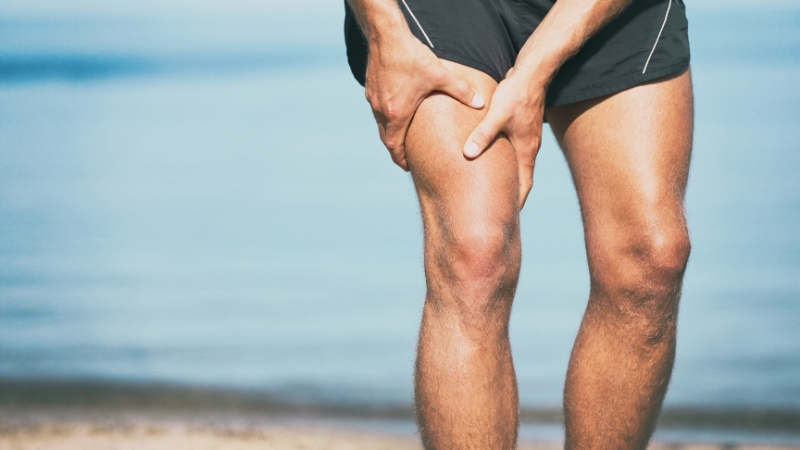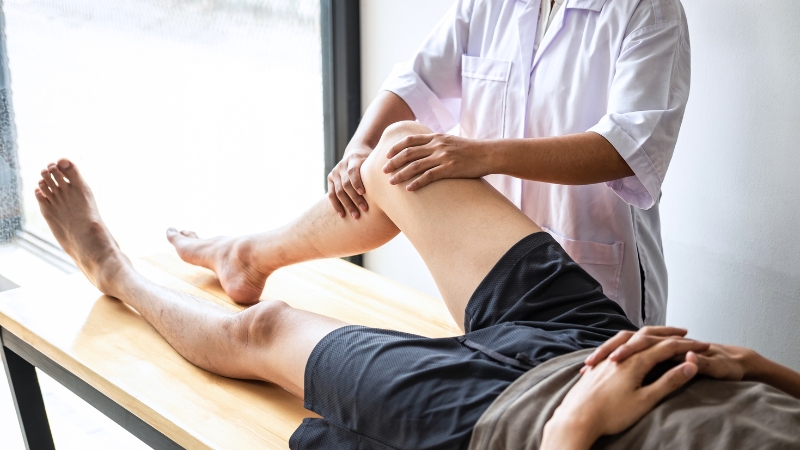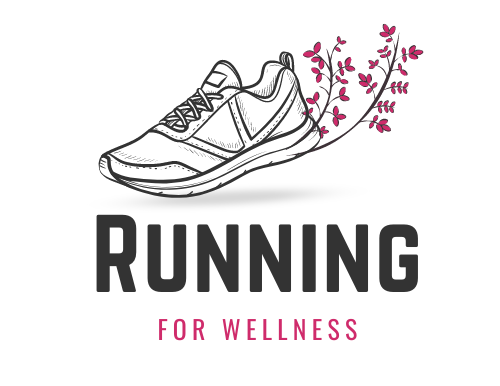Most coaches follow a simple rule when deciding whether you should run while sore: if the soreness is mild, feels better once you start moving, and doesn’t change your running form, it’s generally fine to run; but if the soreness is sharp, localized, or causes you to limp or compensate, you should rest or cross-train instead.
This guideline helps distinguish between normal delayed onset muscle soreness (DOMS), which can occur after hard or unfamiliar workouts, and pain that signals an injury.
The goal is to keep training consistent without turning manageable muscle fatigue into a more serious problem. Mild soreness can often be eased by light running, as increased blood flow aids recovery, but pushing through significant pain risks damage to muscles, tendons, or joints.
Table of Contents
ToggleDifferent Types of Soreness

The Coach’s “Pain Scale” Rule
Pain Level
Description
Recommendation
1–3
Mild soreness or stiffness; no impact on form
Easy run or active recovery
4–5
Moderate discomfort; noticeable but still running normally
Shorten run, reduce pace, monitor closely
6+
Sharp pain, worsening with movement, altered stride
Stop running, rest, and assess for injury
Coaches often use a 1–10 pain scale as a simple decision-making tool. On this scale, 1–3 represents mild discomfort, something you’re aware of, but that doesn’t significantly limit movement.
This is the zone where an easy run is generally fine, and you might even feel better afterward. 4–5 is moderate soreness or pain that’s noticeable during activity and might cause slight hesitation in movement; here, coaches may suggest reducing the session’s duration or intensity, then monitoring closely for changes.
Anything 6 or above – sharp, strong, or worsening pain that affects your form is a signal to stop. Running with high-level pain almost always leads to compensations, such as shorter stride or altered foot strike, which can shift the stress to other muscles and joints, potentially causing secondary injuries.
Many experienced runners learn to calibrate their sense of what “mild” feels like compared to “too much,” but when in doubt, coaches recommend erring on the side of caution. The body adapts to consistent, smart training – not by forcing through sessions that aggravate an injury.
How Running Can Help With Mild Soreness
| Benefit | Why It Matters |
| Increased circulation | Speeds the delivery of nutrients for muscle repair |
| Improved mobility | Reduces stiffness and helps maintain range of motion |
| Mental confidence | Reinforces that soreness is manageable and temporary |
When soreness is from DOMS, running – done at a light, conversational pace – can aid recovery. This is because movement increases blood circulation to the muscles, delivering oxygen and nutrients needed for repair and helping to clear out metabolic byproducts that contribute to the sensation of soreness.
This effect is why many athletes feel looser and more mobile after a short recovery run compared to sitting still all day.
However, the benefits come only when the intensity is low. If you turn a recovery run into a high-effort workout, you risk overstressing muscle fibers that are already in the repair phase.
That’s why coaches often schedule “active recovery” days, where the goal is simply to keep moving, not to hit specific paces or mileage targets.
It’s also worth noting that running on sore muscles can be mentally beneficial. Instead of associating soreness with inactivity, you start to build confidence in your body’s resilience. Over time, this helps reduce fear of normal training discomfort while teaching you to recognize pain that isn’t normal.
Signs You Should Skip the Run

Even with the best intentions, there are clear signs that a run should be postponed. If your soreness is sharp or feels like a stabbing sensation when you move, that’s a sign you may have more than simple muscle fatigue.
Pain that worsens the longer you run rather than easing up with a warm-up is another red flag – DOMS tends to improve after a few minutes of movement, while injury pain does not.
Visible swelling, bruising, or redness is a strong indicator that tissue damage or inflammation is present. Attempting to run with these symptoms can prolong recovery significantly.
Finally, if soreness forces you to limp or change your stride, running will only put abnormal stress on other muscles and joints, often leading to secondary problems such as IT band irritation or shin splints.
Coaches teach athletes to view these signs not as setbacks but as opportunities to protect training consistency in the long run. Missing one or two runs to address a potential injury is far better than being sidelined for weeks or months because you ignored warning signals.
Adjusting Training When You’re Sore
View this post on Instagram
A post shared by Amy Robb | Qualified Running Coach • Workouts • Tips & Tricks (@running_with_amy_)
If soreness is mild and you want to keep running, the safest option is to adjust the session to match your recovery level.
For example, if your schedule calls for intervals or hill repeats but your legs are still sore from a previous workout, swapping the session for an easy-paced run can keep you active without pushing your muscles beyond their current capacity.
Similarly, if your plan includes a long run but soreness is more than minimal, shortening the distance by 20–30% can strike the right balance between maintaining endurance and allowing recovery.
If you’re dealing with muscle tightness in a specific area, you might also modify your route-for example, running a flatter course to reduce strain on fatigued calves after a hilly session.
Some runners replace a scheduled run with a low-impact cross-training activity like cycling, swimming, or pool running. These options maintain cardiovascular fitness while reducing the repetitive loading on sore muscles.
Coaches often view this as smart training rather than “skipping” a workout, since it aligns with the long-term goal of staying healthy and consistent.
Recovery Strategies Between Runs
Recovery Method
How It Helps
Frequency Recommendation
Active recovery
Promotes circulation without overloading muscles
1–2 days after a hard session
Mobility work
Maintains range of motion, reduces stiffness
Daily
Adequate protein intake
Supports muscle repair and growth
Spread evenly across meals
Hydration
Aids nutrient transport and waste removal
Ongoing throughout the day
Sleep
Enables full recovery cycles
7–9 hours per night
Cold/heat therapy
Cold reduces inflammation; heat relaxes muscles
As needed
Whether you run or rest, what you do between sessions plays a big role in how quickly soreness resolves. Active recovery – such as walking, easy cycling, or gentle swimming – keeps blood moving without adding significant stress. Light mobility work and dynamic stretching can help maintain range of motion, especially if soreness is causing stiffness.
Nutrition is another pillar of recovery. Adequate protein intake supports muscle repair, while carbohydrates replenish glycogen stores depleted during training. Micronutrients from fruits and vegetables, particularly those with anti-inflammatory properties, can also aid the recovery process.
Hydration is critical, too, as even mild dehydration can increase the perception of soreness. Sleep may be the most important recovery tool – most tissue repair and hormonal recovery processes occur during deep sleep stages.
Cold therapy, such as ice baths or localized icing, can help reduce inflammation in targeted areas, while heat therapy can relax tight muscles and promote blood flow.
Getting Professional Help for Persistent Foot Pain
Even with smart training and good recovery habits, some issues go beyond self-care.
Persistent foot or ankle soreness, recurring pain after runs, or discomfort that doesn’t respond to rest may signal an underlying biomechanical issue or chronic condition, like:
- Plantar fasciitis
- Stress injuries
- Fait imbalances
In these situations, consulting a podiatrist can make a significant difference. Specialists can conduct gait analysis, recommend orthotics, and provide treatment plans for sports-related injuries.
It doesn’t really matter if you’re dealing with soreness that won’t go away or you want to prevent recurring injuries; an approach from a podiatrist can protect your long-term running consistency and comfort. To explore whether professional care is right for your situation, everyone should learn more.
When to Seek Professional Advice

Some soreness patterns require more than self-monitoring. If soreness persists beyond 4–5 days without improvement, it’s worth getting evaluated by a sports physiotherapist or physician.
Likewise, pain that appears suddenly during a run and doesn’t resolve with rest should be assessed to rule out strains, stress fractures, or tendon injuries.
Recurring soreness in the same area after similar workouts may indicate a biomechanical issue or imbalance that needs addressing. In these cases, a professional can help identify movement patterns, muscle weaknesses, or footwear problems contributing to the discomfort.
The earlier these factors are corrected, the easier it is to maintain consistent, injury-free training.
Bottom Line
The rule most coaches use is clear: you can run with mild, improving soreness that doesn’t alter your stride, but you should rest or cross-train if the pain is sharp, worsening, or forces compensation.
Light running can be an effective tool for easing muscle fatigue when the discomfort is due to normal training adaptation, but ignoring the body’s warning signs risks turning manageable soreness into an injury.
Smart runners learn to assess their symptoms honestly, adjust training loads, and support recovery between runs. By following this approach, you can keep your running schedule on track, improve resilience, and avoid the long-term setbacks that come from pushing through the wrong kind of pain.
Related Posts:
- Top 400 Hilarious Gym Quotes to Keep You Motivated
- 25 Simple Running Motivation Tips To Get You Moving
- Half Marathon Training Plan for Beginners - Simple…
- 80 Best Motivational Cross Country Running Quotes 2025
- How Long Does It Take to Train for a Half Marathon?
- How Far Is a Half Marathon? Everything You Need to Know







